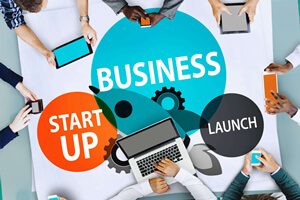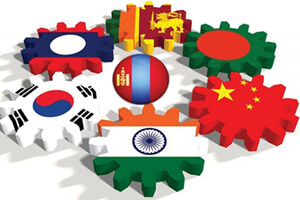How Robinhood Transformed Retail Trading Ahead of Its IPO
“Trading platform Robinhood.”
“And one of the most highly anticipated IPOs of the year.”
“That’s a big deal for the retail investor, but it could also come with some big risks.”
Narrator: Last year, millions of investors traded on the brokerage app Robinhood. They were part of a trend. Since 2020, individual investors bought billions of dollars in equities, driven by the rise in no-fee trading apps with Robinhood leading the way.
Caitlin McCabe: Robinhood, when it came onto the scene, really upended the industry.
Vlad Tenev: We believe that the more people that have access to the markets and can start investing earlier, the better off our economy will be.
Narrator: After a year of dramatic growth, Robinhood filed for its IPO on July 1st. But the filing comes as the brokerage faces a collision course with regulators, including a new Securities and Exchange Commission chairman over a controversial practice that Robinhood uses to generate most of its revenue. Here’s how Robinhood went from startup to IPO in less than a decade and why it’s facing so much turmoil as it gears up to go public.
In the ‘90s, brokerages like E*TRADE and Ameritrade started offering online trading services, which helped open up the stock market to retail investors. But it was expensive.
“Internet trade for $8, Touch-Tone trade...”
Narrator: Trading fees could add up to hundreds or even thousands of dollars a year.
Caitlin McCabe: That was one of the reason why we saw relatively muted levels of individual investors in the market.
Narrator: Caitlin McCabe reports on Robinhood and retail investing for the Wall Street Journal.
Caitlin McCabe: It was cost prohibitive to try to be trading all the time with these fees.
Narrator: That was the case until 2015 when Robinhood released its trading app.
Baiju Bhatt: From the very beginning, our mission has been to democratize the financial system.
Narrator: This is Robinhood co-founder, Baiju Bhatt.
Baiju Bhatt: And for us, this isn’t a headline, it’s not a gimmick or a billboard ad, it’s the central reason why we started the company.
Narrator: To attract new investors, Robinhood offered features that made investing more accessible. It was one of the earliest brokerages to offer no-fee trading. It was also a pioneer in fractional share trading.
Caitlin McCabe: So suddenly, you could buy $10 of Amazon or $50 of Amazon. You could just buy, basically, a slice of that stock and it just made it much easier for investors to access the market in that way.
Narrator: But price wasn’t the only thing keeping retail investors out of the market.
Caitlin McCabe: So it was just really intimidating to try to trade and to try to figure out charts and to understand what was happening in the market.
Narrator: Robinhood also experimented with features aimed at keeping people engaged. When users would log on to the app and place their first trade, it used to rain confetti, stock numbers turned like slot machines, and some of its messages to investors used emojis.
Caitlin McCabe: And it was just a very inviting app, it was very fun. They were just very kind of on the forefront of trying to invite that Millennial crowd into trading. And I think it worked, I think that’s part of the reason why Millennials liked the app.
Narrator: Robinhood’s user base grew quickly, which caught the attention of its competition. By 2019, major brokerages like Charles Schwab and TD Ameritrade had adopted zero commission trading, as well.
Caitlin McCabe: It was just recognition of kind of what Robinhood had built and the market share that it had amassed and that kind of was the genesis of this new trading era that we see today.
Narrator: And then in early 2020, the COVID-19 pandemic took hold of the world.
“We are looking at another day of extreme volatility. Stocks opened just moments ago with the DOW down more than 600 points.”
Caitlin McCabe: I think with the market volatility, a lot of people said, “I think this is a good time for me to try to get into the market,” and that’s where we’ve really seen this explosion of activity from individual investors ever since.
Narrator: According to its IPO filing, Robinhood counted 18 million users with funded accounts at the end of March 2021 and the brokerage’s first quarter revenue more than quadrupled to $522 million. But as Robinhood has grown, so has criticism that some of the app’s features, the very ones that help make it successful could cause problems for inexperienced investors. Critics said the app’s interface which made it fun and easy to use actually gamified trading and put inexperienced investors at risk.
Larry Tabb: Trading’s a challenging business.
Narrator: Larry Tabb is a financial markets analyst who has studied market structure for over 25 years.
Larry Tabb: You’re competing not only with some of the largest investors in the world, but you’re trading with some of the guys with the biggest computers and the fastest data feeds and the most sophisticated analytics. It’s really difficult to continually beat them day in and day out.
Narrator: Over the past year, Robinhood has also faced criticism over how it makes its money and how it previously communicated that with investors. In December 2020, Robinhood agreed to pay $65 million to settle claims that it didn’t sufficiently disclose its business deals with high-speed trading firms. And then there was GameStop.
“Outrage erupting in this wild and expensive battle that’s playing out between Wall Street heavyweights, small investors, and these popular stock trading apps.”
Narrator: In January 2021, Robinhood came under scrutiny after it restricted users from buying GameStop as the company’s share price surged. The trading blackout caused some investors to lose out on potential gains. About 50 class-action lawsuits, investigations by regulators, and multiple hearings with members of Congress followed. Here’s Robinhood CEO speaking with the House Committee on financial services.
Vlad Tenev: Despite the unprecedented market conditions in January, at the end of the day, what happened is unacceptable to us. To our customers, I’m sorry and I apologize.
Narrator: During the hearings, lawmakers scrutinized Robinhood’s use of a financial practice called payment for order flow, which allows the brokerage to route customer orders through high-speed trading firms.
According to Robinhood’s IPO filing, the company made around 81% of its first-quarter revenue from this practice. Payment for order flow has raised red flags with the SEC’s new Chairman, Gary Gensler.
Gary Gensler: This inherent conflict is there, and whether we can address it enough through disclosure or it sort of implicates the broader market structure. And I’ve asked staff to think about that broader market structure.
Narrator: Gensler is reviewing payment for order flow, which could have implications for the future of Robinhood and no-fee trading in general.
Larry Tabb: This is part and parcel of Robinhood how they make money, so it will be really interesting to see if Gensler, you know, decides to be a one-man wrecking crew and…and really radically re-shift how the economics of the retail brokerage business.
Narrator: Robinhood has faced other regulatory issues as well. In June, the brokerage agreed to pay nearly $70 million to resolve allegations that it misled customers, approved ineligible traders for risky strategies, and didn’t supervise technology that failed and locked millions out of trading.
According to its IPO filing, Robinhood continues to face a number of regulatory inquiries. Still, some industry veterans say Robinhood will survive the SEC’s review even if regulations are imposed.















